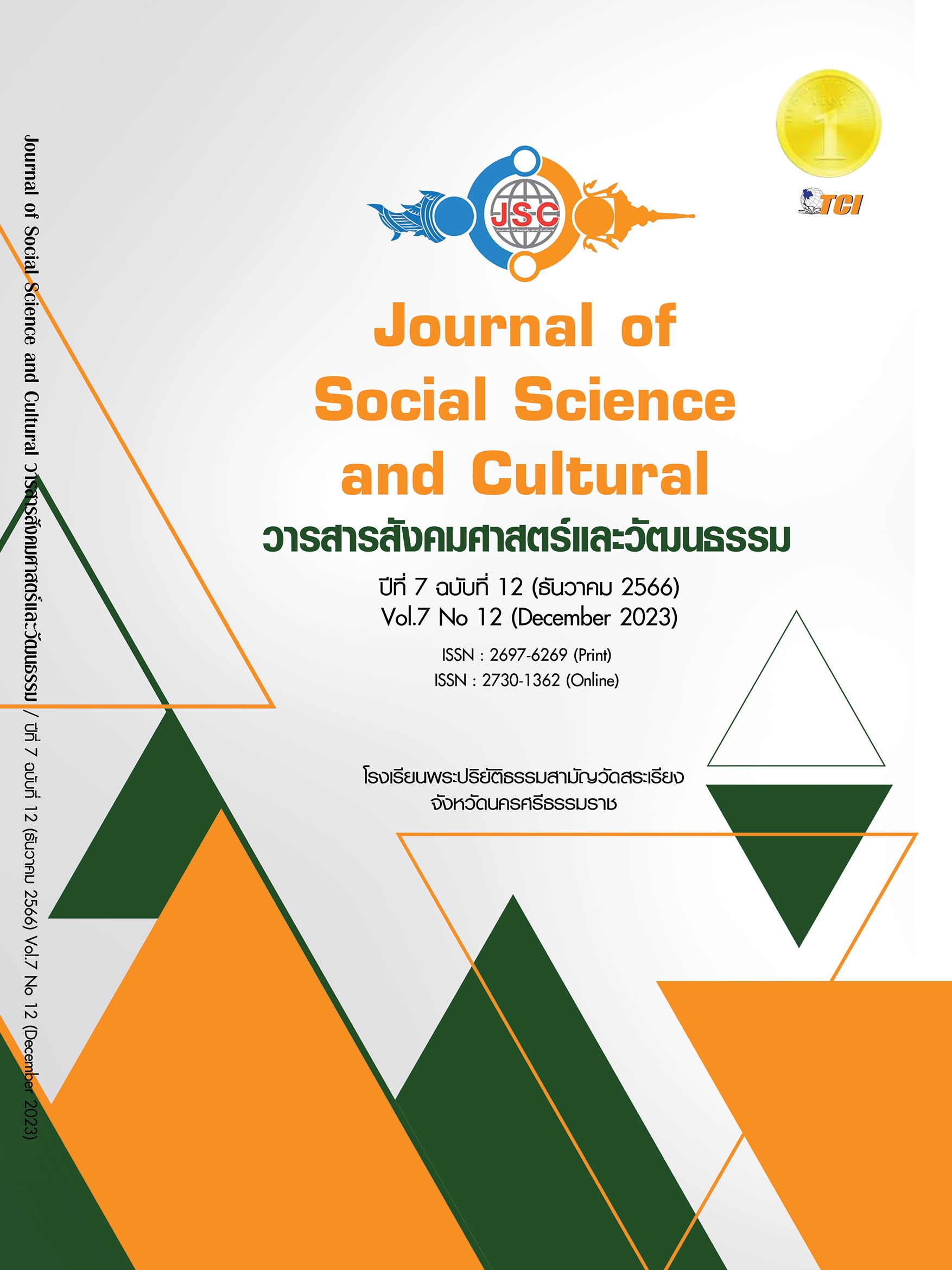THE EDUCATION OF DIGITAL LITERACY FOR SOCIAL STUDIES STUDENTS TO PREPARE FOR THE VUCA WORLD
Main Article Content
Abstract
This research aims to 1) study digital literacy for social studies students in faculty of Social Sciences, Srinakharinwirot University to prepare for the VUCA world and 2) suggest ways develop to social studies students in faculty of Social Sciences, Srinakharinwirot University to prepare for the VUCA world. This research is a survey research method with a volunteer selection. The sample used in the research included 20 lecturers and 120 social studies students. The methodologies used are in-depth interviews and surveys. There are data analysis used percentage and keyword analysis. Results found that: 1) digital literacy for social studies students to prepare for the VUCA world 5 parts are using the digital media, need analysis of students, raising awareness, Critical in receiving information, using digital under the law 2) the ways in develop to social studies students to prepare for the VUCA world are 4 parts; prepare in teaching, teacher’s role and student’s role, Instructional design and evaluate.
Article Details
References
กระทรวงศึกษาธิการ. (2551). หลักสูตรแกนกลางการศึกษาขั้นพื้นฐาน พุทธศักราช 2551. เรียกใช้เมื่อ 1 สิงหาคม 2566 จาก https://academic.obec.go.th/images/document/1559878925_d_1.pdf
คณะกรรมการพัฒนาการเศรษฐกิจและสังคมแห่งชาติ. (2561). ยุทธศาสตร์ชาติ (พ.ศ.2561-2580). สำนักงานเลขานุการของคณะกรรมการยุทธศาสตร์ชาติ. คณะกรรมการพัฒนาเศรษฐกิจและสังคมแห่งชาติ. เรียกใช้เมื่อ 1 สิงหาคม 2566 จาก https://drive.google.com/file/d/1XSBMp8OCsauJqECOB-XZLB91-cRrNsEV/view
ชุติมา สัจจานันท์. (2563). ความฉลาดรู้เรื่องสารสนเทศในสภาพแวดล้อมดิจิทัล. วารสารสังคมศาสตร์และมนุษยศาสตร์, 46(1), 1-17.
บุษบา สุธีธร. (2563). การบริหารการสื่อสารภาวะวิกฤตในโลกที่ผันผวน ไม่ชัดเจนซับซ้อนและคลุมเครือ. วารสารนักบริหาร, 40(2), 130-143.
ปิยธิดา ลออเอี่ยม และคณะ. (2564). การพัฒนาแบบวัดการรู้ดิจิทัล (Digital Literacy) แบบพหุมิติของนักเรียนชั้นมัธยมศึกษาปีที่ 1 โดยประยุกต์ใช้โมเดลเชิงโครงสร้าง. วารสารศึกษาศาสตร์ มหาวิทยาลัยบูรพา, 32(3), 71-86.
พรชนิตว์ ลีนาราช. (2560). ทักษะการรู้ดิจิทัลเพื่อพัฒนาคุณภาพการเรียนรู้. T.L.A. Bullentin, 61(2),76-92.
พัชราภรณ์ ดวงชื่น. (2561). ผู้นำองค์กรในโลก VUCA. วารสารมหาวิทยาลัยคริสเตียน, 24(3), 450-458.
วัฒนาพร ระงับทุกข์. (2563). สมรรถนะเด็กไทยในยุคโลกพลิกผัน (VUCA World). คุรุสภาวิทยาจารย์, 1(1), 8-18.
วิชาการและหลักสูตร มหาวิทยาลัยศรีนคริทรวิโรฒ. (2566). จำนวนนิสิตระดับปริญญาตรี มหาวิทยาลัยศรีนครินทรวิโรฒ ปีการศึกษา 2566. เรียกใช้เมื่อ 2 สิงหาคม 2566 จาก https://academic.swu.ac.th
ส่วนทรัพยากรบุคคล มหาวิทยาลัยศรีนคริทรวิโรฒ. (2566). จำนวนอาจารย์มหาวิทยาลัยศรีนครินทรวิโรฒ. เรียกใช้เมื่อ 30 เมษายน 2566 จาก http://edservices.op.swu.ac.th/data
European Commission. (1994). Europe and the global information society. Recommendations to the European Council by the High-Level Group on the Information Society. Brussels: Belgium: EU publication.
Gilster, P. (1997). Digital literacy. New York: John Wiley.
Kruse, K. (2008). Introduction to Instructional Design and the ADDIE Model. Retrieved January 17 , 2022, from http://www.elearningguru.com/articles/art2
Martin, A. (2003). Information and IT literacy: Enabling learning in the 21st century. London: Facet.
Martin, A. (2010). Digital literacy and the "digital society". C. Lankshear, & M. Knobel, Digital literacies: concept, policies and practices. Brussels: Belgium: Peter Lang Publishing.
Ministry of Education. (2003). Digital horizons: Learning through ICT. Wellington: New Zealand: Ministry of Education.


